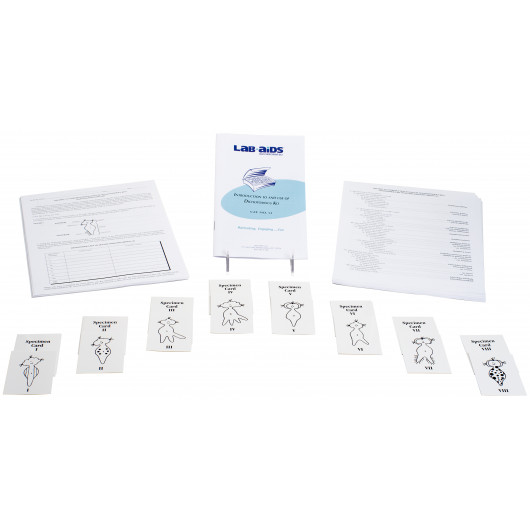Concepts of Classification Kit SKU: LAB 50
This lab activity provides a controlled environment for exploring a rather complex concept: the classification of things different and similar at the same time.


Scientists use dichotomous, taxonomic, keys to identify both living organisms and non-living specimens. Examples of this would be a naturalist's use of a field guide or a chemists use of the periodic table.
All dichotomous keys are developed the same way - similarities and differences in characteristics and traits are observed and recorded. Characteristics in dichotomous keys are typically given in pairs of opposing statements. The observer must make a choice as to which statement most accurately describes the specimen, since statement in each pair can be true. The statement chosen determines the next pair of opposing statements. Statement pairs become increasingly more specific until the specimen is identified. In this game-like activity, students focus on the physical attributes of an imaginary organism. Students identify the specimen and draw two organisms that match the organism's description. This kit is complete for 30 students.
Kit Includes:
Scientific Concepts:
Classroom Planning:
You are sent a comment success. The administrator will review and approve your comment. Thank you!
This lab activity provides a controlled environment for exploring a rather complex concept: the classification of things different and similar at the same time.
Weather impacts everyone, everyday in some way and the meteorologist that study weather patterns are our best source for information. This experiment provides students with the experience of...
Test mineral hardness, streak color, acid reaction, and more with this great set of nine testing items.

Scientists use dichotomous, taxonomic, keys to identify both living organisms and non-living specimens. Examples of this would be a naturalist's use of a field guide or a chemists use of the periodic table.